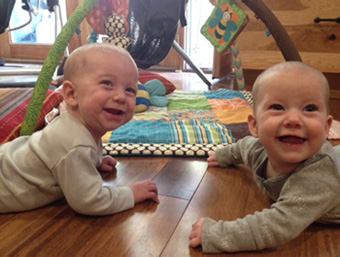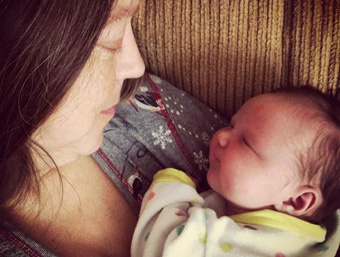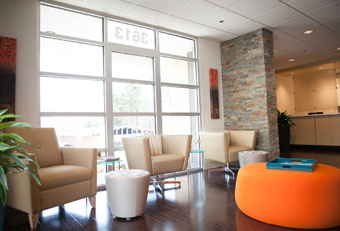As a former general ob/gyn, I was commonly asked by my patients to perform tubal ligation procedures.
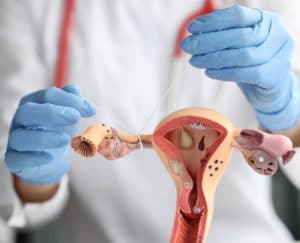
Fallopian tubes are never just tied
Many of these women…if not all of them…would be dramatic when requesting a tubal. They would often ask “Can you please just cut, tie, and burn my tubes? You can even throw them in the trash! I just don’t want to be pregnant anymore.”
Medical research has shown about 1 out of 3 women will regret getting their tubes tied.
Many of these women will research if cut tied and burned tubes can be reversed?
Many will sit at their computers late at night Googling “can cut tied tubes be reversed”?
They soon discover they only have two options: tubal reversal surgery or in-vitro fertilization hormonal treatments.
Since becoming a tubal reversal expert, my office is contacted daily by women asking us the exact opposite of what many of them so dramatically asked for when they thought they were done with having kids: can we reverse cut, tied, and burned tubes?
Many women don’t really understand the procedure they requested. They have no idea what was exactly done during their tubal ligation procedure. They simply understand that they will not naturally become pregnant again.
I want to explain what having cut, tied, and burned tubes really means.
Cut Tied and Burnt Tubes: What it means?
In the past, many patients asked me to cut, tie, and burn their tubes. Did I always do what was requested and in that order?
The answer is “No” because there really is no such thing as a cut, tied, and burned tubal ligation procedure!.
Let me say this again, “There really is no such thing as a cut, tied, and burned tubal ligation procedure!.”
When patients ask doctors to cut, tie, and burn their tubes they really have a very limited understanding of what a tubal ligation really means. These patients are not doctors. They really don’t know or understand all of the surgical procedures to block fallopian tubes.
Many patients are simply asking for an effective, permanent procedure so they never accidentally become pregnant again.
The phrase ‘cut, tie, and burned’ is a non-medical person’s way of asking their doctor to do everything conceivably known to prevent a future, unwanted pregnancy.
Very often when a doctor tells a patient, ” I cut, tied, and burned your tubes. It is not reversible. You will never get pregnant again.”, then doctors are just responding to a lay person’s request by using lay person’s language to easily explain they did everything possible to prevent pregnancy and avoid a tubal ligation failure.
These doctors are simply trying to say…you can rely on what they did and you don’t have to stay up all night worrying about a tubal ligation failure.
There really is no such thing as a cut, tied, and burned tubal ligation procedure,
The problem is…when women regret these procedures…all they remember are two things: 1) asking the doctor to cut, tie, burn and throw their tubes in the trash and their doctors final response of 2) it is not reversible and you will never get pregnant again.
All Tubal Ligation Procedures Cause Blockage
A tubal ligation does one thing and one thing only….prevents sperm and egg from meeting. Tubal ligation prevents fertilization of the egg. If sperm can’t get to an egg…then the egg can’t get fertilized…and you don’t get pregnant.
All tubal ligation procedures cause blockage of the fallopian tube. The sperm stays on the uterine side of the blocked tube and the egg stays on the ovarian side of the blocked fallopian tube.

First, the tubes are not wrapped over on themselves and tied like a pony-tail or some complicated hair style. This is just not possible.
Second, fallopian tubes are not just tied close with suture or string. Tubes are not just tied closed because this would have a high failure rate.
Tubes are never “just tied” and never “just cut” because this would not work very well.
If tubes were just “tied”…there would be an unacceptable increase in the failure rate. If tubes were just “cut” then women would bleed to death from the cut ends of the fallopian tube.
Tubes are tied…and the piece of the tube between the suture is cut out. The suture then slowly dissolves. As the suture slowly dissolves, the cut ends of the tubes slowly heal closed.
The only purpose of the suture is to minimize the chance of severe bleeding from the cut tubal ends.
What Are The Common Tubal Ligation Methods?
Fallopian tube coagulation (burning). Tubes are usually burned when a tubal ligation is performed more than 6 weeks after giving birth. This is commonly a laparoscopic procedure…with a camera inserted through your belly button and into your abdomen.
Fallopian tubes are occasionally burned (coagulated) to cause them to heal close. Coagulation, more commonly known as ‘burning’, causes the tubes to heal close as well. The burned tissue is dead tissue. After the tubes are burned, the small burned area slowly gets absorbed by the body and the ends slowly heal closed.
Ligation and resection (tying and cutting). The medical term for tying and cutting is “partial salpingectomy” or removing a small part of the tube. This method should not be confused with “total salpingectomy” (see below).
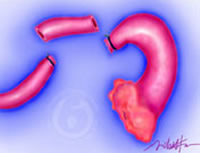
Example of tying and cutting tubal ligation
Ligation and resection tubal ligations are the MOST COMMON type of tubal ligation. This method is where the phrase to ‘tie tubes’ comes from.
Tubal clips and tubal rings (clips and rings). Tubes clips and rings are performed more than 6 weeks after giving birth. This is commonly a laparoscopic procedure…with a camera inserted through your belly button and into your abdomen.
Tubal clips and tubal rings close off the tube and cause the tubes to heal closed. Clips and rings do not come undone. They can be inappropriately placed, but they do not come undone. They may slip off the tube, but the tube has healed closed by the time this occurs.
Essure and Adiana devices (Essure known as the metal coils/springs and most women have never heard of Adiana). These methods are the newest tubal ligation methods. These devices are usually inserted 6 weeks of more after you give birth. Often this is done in a doctors office. These devices are no longer being made. They have been removed from the healthcare marketplace.
Essure devices and Adiana devices can be inserted inside the fallopian tubes using a small camera inserted through your vagina and cervix and into your uterus. These devices both cause scar tissue to form inside the fallopian tubes. The formation of scar tissue causes permanent blockage inside the tubes and sperm and egg are unable to meet.
Total salpingectomy (complete removal of the fallopian tubes). This is an extreme cutting and tying method. The fallopian tubes are completely detached from the uterus and removed from the body. The tubes are sent to pathology for measurement…and then they are…quite literally…thrown in the medical trash and incinerated as medical waste.
The area on the uterus where the tubes are removed will heal closed. Sperm can’t find eggs. This method cannot be surgically reversed…the other methods can be surgically reversed.
Can Tubes Regrow, Can Tubes Reconnect, Can Tubes Come Undone?
Tubes can not reattach, they can not reconnect, nor can they grow back together.

Tubal failure can happen when tubes don’t heal with complete blockage. Tubes can heal incompletely with a fistula, but they will never reconnect by themselves. A fistula is when the end of the tube heals mostly closed but leaves a very small opening. This small opening can result in a pregnancy.
More information: Can fallopian tubes come untied?
More information: Fistula and tubal ligation failure
Don’t count on this type of tubal failure if you want to become pregnant because many of these pregnancies will be ectopic (tubal) pregnancies.
Can Cut, Tied And Burned Tubes Be Reversed?
Cut, tied, and burned tubes are reversible…but it depends on how much of each tube was removed and thrown in the trash.
If you would like to be considered a candidate for tubal reversal and you have had cut, tied, and burned tubes…then you should us a copy of your tubal ligation operative report for a free review. You should also send us the pathology report if a small part of your tube was removed.
If less than 2 cm of tube was removed then you should be a good candidate. If the ends of your tubes were removed then reversal is less likely to work. The only way to know for sure is to review your operative note and pathology report.
If this is all too confusing for you…then watch this video for more information on operative notes, records, pathology reports and the best way to get these reports.
Are You A Candidate For Reversal Of Cut Tied And Burned Tubes?
If you would like to know if you are a candidate for tubal reversal surgery, then you should send us a copy of your tubal ligation notes for a free review.
More information: How to send records for review?
All patients will have a tubal ligation operative note but not all patients will have a pathology report. Only patients who had ligation and resection procedures…usually done within 48 hours of child birth… will have a pathology report. Pathology reports are only created when tissue or objects are removed from the human body during surgery.
The video above carefully explains the difference between operative notes and pathology notes and how you can obtain a copy of your tubal ligation reports.

